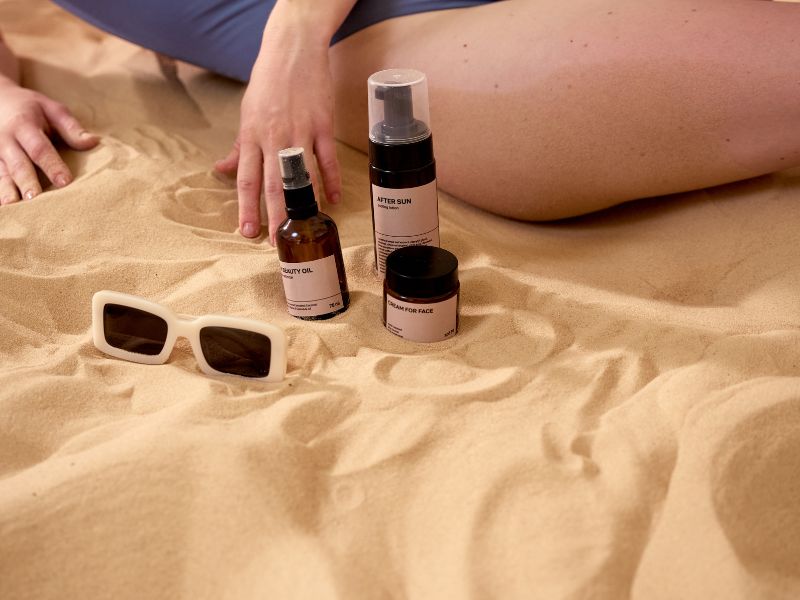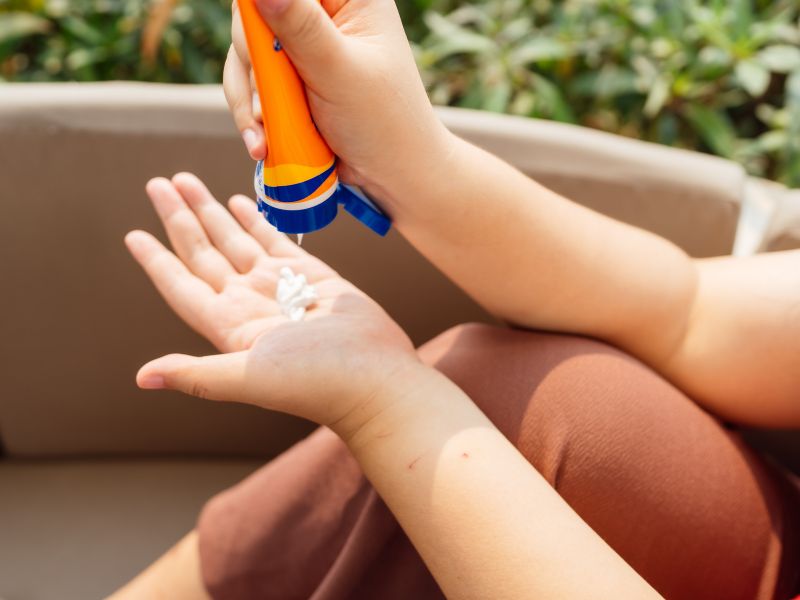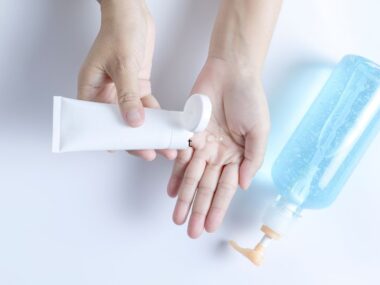Sunscreen is one of the most critical skincare products for protecting skin from the harmful effects of UV radiation. However, many people struggle with effectively removing sunscreen, particularly the more resilient, waterproof, or mineral-based formulas designed to stick to the skin through sweat, water, and daily activities. Proper removal is essential, as sunscreen can leave behind residues, clog pores, and potentially cause skin irritation if not fully removed. In this article, we’ll explore effective techniques for washing off sunscreen from the face, focusing on the best practices, recommended products, and the science behind sunscreen removal.
Understanding Sunscreen Types and Their Challenges
Before discussing how to remove sunscreen, it’s important to understand why some sunscreens are harder to wash off than others. There are two primary types of sunscreen:
- Chemical Sunscreens: These absorb UV rays and convert them into heat, which the skin then releases. Chemical sunscreens are typically easier to remove than mineral sunscreens but can still leave a residue if not washed off properly.
- Mineral (Physical) Sunscreens: These sit on the skin’s surface and deflect UV rays. They often use ingredients like zinc oxide and titanium dioxide, which are thicker and harder to break down with regular cleansers. Mineral sunscreens are more resistant to water and sweat, making them a bit more challenging to remove.
Both types of sunscreens, especially when formulated for long-lasting protection, can mix with sweat, oil, and environmental debris. This combination makes sunscreen removal a critical part of a skincare routine.
Why It’s Essential to Wash Off Sunscreen Properly
Sunscreen residue left on the skin can contribute to various skin issues:
- Pore Clogging: Sunscreen particles, when mixed with dirt, oil, and other residues, can clog pores and lead to blackheads or acne.
- Skin Irritation: Some chemical sunscreen ingredients can irritate if left on the skin for extended periods, especially for sensitive skin types.
- Dull Skin: Residual sunscreen can prevent the skin from breathing, contributing to a dull, lacklustre appearance.
A proper cleansing routine ensures that the skin is clean, free from residue, and able to absorb other skincare products effectively.
How To Wash Off Sunscreen On Face: Step-by-Step Guide
Use an Oil-Based Cleanser
An oil-based cleanser or cleansing balm is one of the most effective products for breaking down sunscreen, especially water-resistant formulas. Oil attracts oil, meaning that the oils in sunscreen adhere to the oil-based cleanser, which helps dissolve the product.
- How to Use: Apply a small amount of oil cleanser onto dry skin and gently massage it in circular motions. Focus on areas where sunscreen buildup may occur, such as the nose, forehead, and chin. This step effectively breaks down sunscreen and any other impurities.
- Recommended Ingredients: Look for oil cleansers containing jojoba oil, squalane, or grapeseed oil. These oils are non-comedogenic, meaning they won’t clog pores and are suitable for most skin types.
Double Cleansing with a Water-Based Cleanser
The double-cleansing method involves using two different types of cleansers—an oil-based cleanser followed by a water-based cleanser. This method is especially effective for removing sunscreen thoroughly.
- How It Works: After using the oil cleanser, follow up with a gentle foaming or gel cleanser. Water-based cleansers remove any remaining residue that the oil cleanser may have left behind. This second step also clears away impurities like sweat, sebum, and dirt.
- Best Choices for Sensitive Skin: Choose a sulfate-free, low-pH cleanser to avoid drying out the skin or causing irritation. Hydrating cleansers containing ingredients like hyaluronic acid or ceramides help maintain the skin’s natural moisture barrier.
Try Micellar Water for a Quick Cleanse
Micellar water is an alternative cleansing option for those looking for a more convenient way to remove sunscreen, especially if reapplying throughout the day. Micelles in the water attract sunscreen particles, dirt, and oil without the need for rigorous scrubbing.
- How to Use: Soak a cotton pad with micellar water and gently swipe it over your face. You may need multiple cotton pads to ensure all traces of sunscreen are removed. Avoid rubbing too hard, as this can irritate the skin.
- For Best Results: Micellar water is best for light sunscreen applications or reapplications, as it may not be as effective on heavy or water-resistant formulas. Follow up with a water-based cleanser if needed.
Exfoliate Weekly for Deep Cleansing
While not necessary daily, exfoliation can help remove any sunscreen buildup and dead skin cells that regular cleansing might miss. However, over-exfoliating can compromise the skin barrier, so this step should be done only once or twice a week.
- Physical vs. Chemical Exfoliation: For deeper cleansing, opt for a gentle chemical exfoliator, such as one containing AHAs (like glycolic acid) or BHAs (such as salicylic acid). These ingredients dissolve buildup in the pores without scrubbing, which can be especially beneficial for sensitive skin.
- Application Tips: Use exfoliants in the evening, as exfoliating during the day can make your skin more sensitive to sunlight. Always follow up with sunscreen if you exfoliate in the morning.
Avoid Using Harsh Soaps or Scrubs
It may be tempting to use a harsh soap or scrub to remove sunscreen, but doing so can irritate the skin. Soaps with a high pH level can strip the skin’s natural oils, leading to dryness and a compromised skin barrier. Similarly, abrasive scrubs can cause microtears in the skin, especially if used frequently.
- Alternative Cleansing Ingredients: Look for gentle cleansers containing hydrating and soothing ingredients like aloe vera, chamomile, and glycerin to ensure that skin remains calm and comfortable.
The Role of pH and Skin Barrier Health in Sunscreen Removal
The skin’s natural pH level is slightly acidic, around 5.5, which helps maintain its protective barrier and microbiome. Cleansers with a high pH can disrupt this balance, causing dryness and irritation. Ensuring the skin barrier remains intact is crucial because a compromised barrier can lead to increased sensitivity and susceptibility to environmental stressors.
When selecting a cleanser, it’s best to choose pH-balanced or low-pH cleansers, especially if you have sensitive or acne-prone skin. These types of cleansers help remove sunscreen effectively without stripping the skin of its natural oils, ensuring that the skin remains hydrated and healthy.
After-Cleansing Tips for Healthy Skin
After cleansing, it’s essential to follow up with products that hydrate and protect the skin. Here are some post-cleansing tips:
- Toner: A hydrating, alcohol-free toner can help restore moisture and balance the skin’s pH after cleansing. Ingredients like rose water, witch hazel, and hyaluronic acid are great for keeping the skin supple and fresh.
- Moisturizer: Sunscreen removal can sometimes strip away moisture, so it’s important to replenish with a good moisturizer. Look for one containing ceramides, peptides, or hyaluronic acid to restore hydration and strengthen the skin barrier.
- SPF Application: If you cleanse in the morning, reapply sunscreen after moisturizing, as you still need protection against UV rays during the day.
Common Mistakes to Avoid When Washing Off Sunscreen
- Using Hot Water: Hot water can irritate the skin and strip it of essential oils. Always use lukewarm water to cleanse your face.
- Skipping the Oil Cleanser: Many people assume that a single cleanse with a water-based cleanser is sufficient. However, oil-based cleansers are particularly effective at breaking down sunscreen, so skipping this step can leave residues behind.
- Using Makeup Wipes: While convenient, makeup wipes are often ineffective at thoroughly removing sunscreen. They can leave residues and require tugging at the skin, which may lead to irritation over time.
- Forgetting to Rinse Micellar Water: Though often marketed as a “no-rinse” product, micellar water can leave surfactants on the skin that need to be rinsed off to avoid irritation and dryness.
Recommended Products for Sunscreen Removal
Here are some highly-rated products that help effectively remove sunscreen:
- Oil-Based Cleansers: The Banila Co Clean It Zero Cleansing Balm and DHC Deep Cleansing Oil are excellent options. Both dissolve waterproof sunscreen effectively while being gentle on the skin.
- Water-Based Cleansers: The CeraVe Hydrating Cleanser and La Roche-Posay Toleriane Hydrating Gentle Cleanser are low-pH options that work well for sensitive skin.
- Micellar Water: Bioderma Sensibio H2O Micellar Water is widely recommended for effective, gentle cleansing without irritation.
- Exfoliants: The Paula’s Choice Skin Perfecting 2% BHA Liquid Exfoliant is popular for deep cleansing, especially for oily or acne-prone skin.
Conclusion
Properly washing off sunscreen is a crucial part of maintaining healthy skin, as residual sunscreen can clog pores and lead to irritation. Following a double-cleansing method, using oil-based and water-based cleansers is one of the most effective ways to ensure a clean face free of sunscreen residue. Avoid harsh scrubs and high-pH cleansers, and remember to follow up with hydration to keep your skin barrier intact. With the right approach, you can keep your skin protected, clean, and radiant every day.






